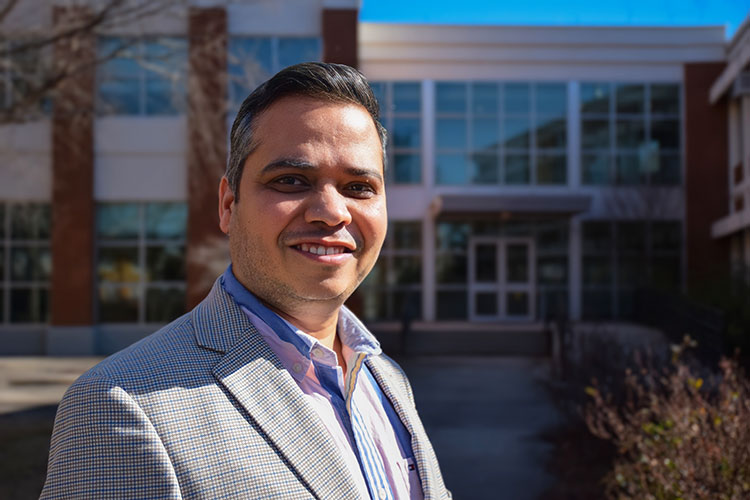University of Georgia food microbiologists have created a cloud-based software tool that can quickly classify strains of salmonella, one of the most prevalent foodborne pathogens in the world.
The system, SeqSero, is a bioinformatics tool that identifies serotypes, or individual, distinct strains, of salmonella using whole genome sequencing (WGS). Developed by UGA College of Agricultural and Environmental Sciences food science graduate student Shaokang Zhang, the website is used by public health officials and scientists across the globe.
Sequence files can be easily uploaded, and the system sends an analysis in minutes, 24 hours a day, seven days a week at no charge, said Xiangyu Deng, a food microbiologist with the UGA Center for Food Safety in Griffin, Georgia.
Deng compared the system to a detective investigating a crime. “For investigation and surveillance purposes, you need to be able to profile your suspects at different levels, from general demographics to fingerprints. If your suspects are salmonella, serotype determination, or serotyping, is the first step of your profiling,” he said. “It’s now possible to do all the profiling with whole genome sequencing, and it saves a lot of time and (steps in) workflow.”
The Centers for Disease Control and Prevention (CDC) estimates 1.2 million illnesses and 450 deaths in America each year can be linked to non-typhoidal salmonella.
“There are more than 2,500 serotypes described for salmonella, and SeqSero focuses primarily on more common serotypes while also being able to ID many rare serotypes,” Deng said.
Salmonella bacteria look alike under a microscope, but can be separated into many serotypes based on two structures on their surface, Deng explained. Serotyping forms the basis of the U.S. and international surveillance systems of salmonella.
“Traditional identification of salmonella serotypes can be logistically challenging because you need to maintain hundreds of reagents (substances used for chemical analyses) to be able to determine the full set of serotypes. It is also time consuming and can take two or more days to complete,” Deng said. “This is a highly desirable bioinformatics system and allows for push-button, fast, straightforward and accurate identification of salmonella serotypes from raw data that comes directly off sequencers.”
It took the UGA team a year to develop the highly sophisticated food safety tool that has been publicly available for two months. It is supported by all major Internet browsers and mobile devices and is user friendly. “It can easily be used by novice users and non-bioinformatics experts,” Deng said.
The system and its Web application, denglab.info/SeqSero, were created with funding from the food industry and in collaboration with the National Salmonella Reference Laboratory at the CDC. It was described in a paper that appeared online in March in the Journal of Clinical Microbiology.
The CDC, the U.S. Food and Drug Administration and the U.S. Department of Agriculture’s Food Safety and Inspection Service are among the early users of SeqSero, which has so far attracted queries from other countries including Canada, China, Denmark, France, Israel, Portugal, Sweden, Australia and New Zealand. The CDC’s Enteric Diseases Laboratory Branch has adopted SeqSero for its routine processing of salmonella genomes.
With the Technical University of Denmark and the Global Microbial Identifier initiative, Deng is now preparing SeqSero as a next-generation serotyping tool for the Danish National Salmonella Surveillance system.
For more on the UGA Center for Food safety, go to www.ugacfs.org/.







